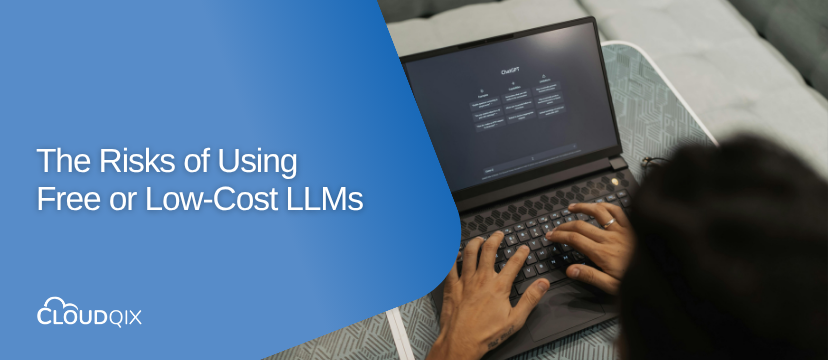AI tools have quickly woven themselves into everyday workflows. They draft code, summarize reports, and generate content in the blink of an eye.
But when these free or low-cost large language models (LLMs) are used with private, sensitive data, that convenience comes at a price. Sensitive information meant to stay within an organization’s walls can quietly flow to systems outside its control.
It happens more often than most teams realize. Confidential notes get pasted into an LLM for a quick rewrite, internal files are uploaded for summarization, or a plugin is granted access to a shared workspace to automate. Each small step opens the door to data exposure.
How LLM Security Risks Lead to Data Leaks
Most data leaks don’t happen all at once. They build up over time through everyday use and small habits that go unnoticed.
Prompts and Inputs
Every prompt that is entered into a public LLM, whether it be project details, account numbers, or even internal plans, can be stored and logged by the LLM provider. Even with anonymizing your data, model training can still retain the unique patterns of an organization’s data. Once stored, that information may stay logged indefinitely.
Uploaded Files
When documents are dropped into a chat window, they are typically processed on external servers. That means that the content leaves the local infrastructure entirely. Visibility into where those documents are stored, for how long, or who can access them isn’t often possible. So sensitive data is just floating in space.
Metadata
Behind every request sits metadata: timestamps, IP addresses, session identifiers and other identifiable data. These small fragments can reveal a lot about an organization. Operational schedules, device details, workflow habits, and even the text itself, even when it appears to have been redacted.
Chat History and Logs
Most free and low-cost LLMs keep all of the AI’s interactions in permanent archives. When multiple users share a workspace, past sessions can be accessed, copied, or exported, all without any audit trail. While it seems like a harmless chat history, it can quickly become an unprotected data repository.
Common LLM Security Weak Points in the AI Workflow
Public AI models should be treated as open environments where any information entered could become visible, retrievable, or repurposed. Even teams that carefully handle prompts can still face data exposure from weak integration points.
Browser Extensions
Many AI-based browser extensions intercept the contents of a page or text and route it through third-party servers for processing. Those logs end up living outside of corporate oversight.
Third-Party Plugins
When AI tools are connected to communication platforms like Slack, Notion, Google Drive, etc, they typically request a broad level of read and write permissions. Any simple misconfiguration can lead to that data being duplicated or unsandboxed data.
Shared Workspaces
In free or low-tier LLM accounts, credentials are normally shared among multiple users. This removes any role-based access or monitoring. Without these functions, any team member can view a full conversation history or download transcripts containing confidential material from prompts.
Practical Safeguards to Prevent LLM Security Risks
Free or low-cost LLMs are not suitable for handling sensitive data. Using this AI responsibly starts with intentional habits and clear boundaries. Before submitting anything to an LLM, take a moment to replace sensitive details like client names, project codes, financial data, or anything that could identify your organization with placeholders.
Along with that, user access should be limited, meaning no more shared workspaces. Only authorized team members should be able to use external tools for approved purposes. It’s just as important to keep a record of how these tools are being used. Audit trails paired with monitoring make it easier to trace user activity. Above all, private data should never be processed directly through public LLMs. Keep confidential information within secure, internal systems where the organization maintains complete control.
The More Secure Path Forward With CloudQix
Organizations have a few practical options for keeping their data protected while still benefiting from LLMs. There are two main ways to achieve it.
The first is through enterprise-grade LLM licensing. Platforms like ChatGPT Enterprise or Azure OpenAI offer better security frameworks, including encryption and more isolated data environments. They are designed to meet compliance and privacy standards, but enterprise licenses often come with high costs that can be difficult to justify.
The alternative is a trusted intermediary model, like CloudQix.
Instead of sending data directly to public AI models, CloudQix acts like a secure gateway, routing LLM interactions through compliant databases to ensure that sensitive data never leaves an organization’s environment. Each access point is governed, and every log is completely auditable.
CloudQix delivers enterprise-level protection without enterprise pricing, allowing teams to adopt generative AI tools without surrendering data ownership or privacy.
Want guidance on leveraging AI without exposing your data? Contact CloudQix, and we’ll show you how to do it safely.


